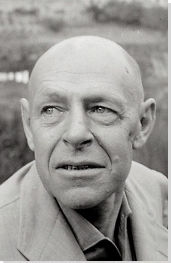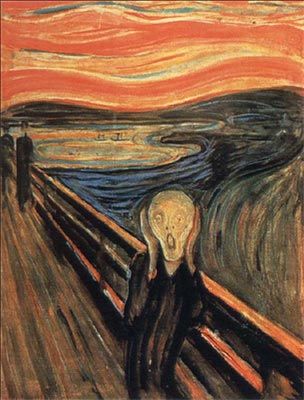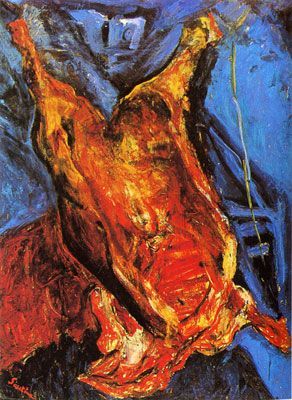Summary of Jean Dubuffet
Jean Dubuffet disliked authority from a very early age. He left home at 17, failed to complete his art education, and wavered for many years between painting and working in his father's wine business. He would later be a successful propagandist, gaining notoriety for his attacks on conformism and mainstream culture, which he described as "asphyxiating." He was attracted to the art of children and the mentally ill, and did much to promote their work, collecting it and promulgating the notion of Art Brut. His early work was influenced by that of outsiders, but it was also shaped by the interests in materiality that preoccupied many post-war French artists associated with the Art Informel movement. In the early 1960s, he developed a radically new, graphic style, which he called "Hourloupe," and would deploy it on many important public commissions, but he remains best known for the thick textured and gritty surfaces of his pictures from the 1940s and '50s.
Accomplishments
- Dubuffet was launched to success with a series of exhibitions that opposed the prevailing mood of post-war Paris and consequently sparked enormous scandal. While the public looked for a redemptive art and a restoration of old values, Dubuffet confronted them with childlike images that satirized the conventional genres of high art. And while the public looked for beauty, he gave them pictures with coarse textures and drab colors, which critics likened to dirt and excrement.
- The emphasis on texture and materiality in Dubuffet's paintings might be read as an insistence on the real. In the aftermath of the war, it represented an appeal to acknowledge humanity's failings and begin again from the ground - literally the soil - up.
- Dubuffet's Hourloupe style developed from a chance doodle while he was on the telephone. The basis of it was a tangle of clean black lines that forms cells, which are sometimes filled with unmixed color. He believed the style evoked the manner in which objects appear in the mind. This contrast between physical and mental representation later encouraged him to use the approach to create sculpture.
Important Art by Jean Dubuffet
Apartment Houses, Paris
The painting Apartment Houses, Paris focuses on urban life. The buildings are tilted, playfully defying architectural integrity. The flattening of the space between the sky, buildings, and civilians seems spontaneous and unprocessed - childlike. Here Dubuffet satirizes conventional, sentimental images of Paris, suggesting instead that the jollity of the city's inhabitants is forced and false.
Oil with sand and charcoal on canvas - Private Collection
Grand Maitre of the Outsider
This picture is typical of the Hautes Pates series that Dubuffet exhibited to huge controversy in 1946. A thick, monochromatic surface serves as the ground for the crudely depicted figure, which is a parody of portraiture. Although Dubuffet undoubtedly intended the series to offend and his graphic style and thick, coarse impasto certainly did offend conventional tastes, it is worth noting that the color palette is not as jarring as it might be. Dubuffet was at least cautiously mindful of the need for success.
Oil and emulsion on canvas - Private Collection
The Cow With The Subtle Nose
Dubuffet's heady experience in the country and rejection of art education is evident in this painting. The heavily textured surface depicts a cow, rendered in the childlike innocence of patients held in psychological facilities. The uninhibited, savage approach to the canvas exemplifies the concepts of what Dubuffet termed Art Brut - the image seems entirely unschooled in the traditions of landscape. The image is thus at odds with the notions of "high art," and approaches art making from the direction of artistic purity uninfluenced by cultural advancement. Going a step further, Dubuffet suggests how "cultural" and "savage" approaches to art together work to reaffirm civilization as a whole.
Oil and enamel on canvas - The Museum Of Modern Art, New York
Soul of the Underground
Soul of the Underground exemplifies Dubuffet's fascination with texture and his departure from representational painting. Inspired by the surface quality of Jean Fautrier's paintings, Dubuffet's use of aluminum foil and oil paint creates a coarse, uneven surface resembling mineral deposits. Here Dubuffet completely abandons pictorial representation in order to evoke sheer matter and sheer unprocessed material. It is part of a series of Texturologies that he worked on throughout the 1950s as he became more interested in evoking different sorts of texture.
After the horrible destruction of World War II, mud and dirt is what remained in plentitude. Rather than proclaiming that civilization had ceased, Dubuffet wanted to use the rubble to build anew and to purify for the future. In addition, the dirt is thought of as a material that has a natural structure that can be discovered, explored, and put to new uses.
Oil and aluminum foil on composition board - The Museum Of Modern Art, New York
L'Hourloupe
Dubuffet's L'Hourloupe series began in 1962 and would preoccupy the artist for many decades. The inspiration came from a doodle he created while on the telephone, in which the fluid movement of line combines with limited fields of color to create movement. He believed the style evoked the manner in which objects appear in the mind. This contrast between physical and mental representation later encouraged him to use the approach to create sculpture.
Ink on paper - Galerie Jeanne Bucher, Paris
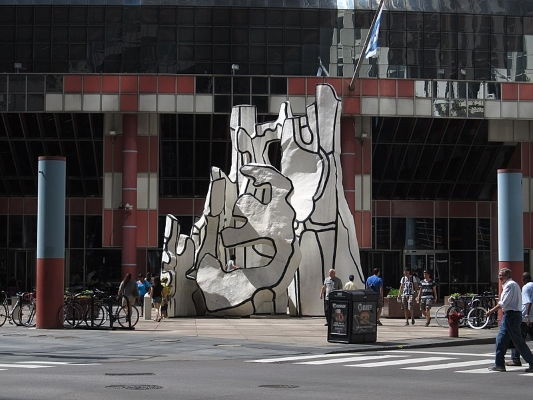
Monument with Standing Beast
Monument with Standing Beast is another sculpture based on Dubuffet's Hourloupe series. The piece is one of his three monumental sculptures based in the United States. The sculpture is an abstract representation of a tree, a standing animal, and an architectural structure. The work evokes graffiti and cartoons, though it also plays on the contrast between mental images and real objects. The visitor is invited to wander and contemplate within the black and white walls of the sculpture.
Fiberglass - James R. Thompson Center, Chicago, IL
Biography of Jean Dubuffet
Childhood
Jean Dubuffet was born on July 31, 1901, in Le Havre, France, into a middle-class family that distributed wine. Although he was well-educated, he came to reject his studies, preferring to educate himself by reading the work of Dr. Hans Prinzhorn, who drew comparisons between the art of asylum inmates and the artwork of children. Based on these observations, Prinzhorn stated that it was savagery, or base animal instinct, that lead to universal harmony, arguing that it was the primal instinct, not intellectual theory or analysis, that connected all living things. This concept had a strong influence on Dubuffet's later career.
Early Training
In 1918, Dubuffet moved to Paris where he studied painting at the Académie Julian. Dubuffet thought of himself as savage in comparison to the intellectuals at the art academy. Rebelling against the institution, Dubuffet took a stance that was anti-art and anti-culture, for example, refusing to be constrained by categories like "Surrealist" and "Futurist." After attending classes for six months, he withdrew from the academy, deeming his studies useless. In 1924, Dubuffet took over his father's wine business and continued to study on his own. He found solace with the common, everyday people of the country and believed there was meaning in living a simple life with a focus on music and poetry. It was not until 1942 that Dubuffet decided to return to painting where he could explore this fondness for quotidian life and the interiority of human emotion.
Mature Period
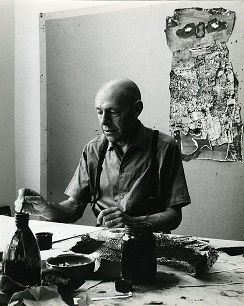
Frustrated by intellectual approaches to art, Dubuffet continued to admire the artwork of asylum inmates and children. In attempting to recreate what he saw as their uninhibited style, he chose to paint in seclusion where he could experiment with new methods and concepts, unfettered by theory or popular trends. Heavily influenced by the paintings of Jean Fautrier, Dubuffet began to take a similar approach to the texture of his paint, combining sand, gravel, tar, and straw to his paintings to create a thick emulsion. The mixtures created a highly textured surface, providing the ideal ground for his raw, primal figures. As Dubuffet became increasingly obsessed with texture, he began to drastically limit his palette, focusing on dark, monochromatic surfaces and figures.
Dubuffet's subject matter featured the surrounding countryside, including childlike depictions of cows and milkmaids, but shifted to focus on urban landscapes and city dwellers. Although he created many portraits based on urban individuals, he chose to depersonalize them, exaggerating features and proportions to create grotesque caricatures, challenging cultural standards of beauty, traditional academic notions of realism, and the more contemporary obsession with non-objective art. What is most striking about his work from this period is his deliberate evocation of ugliness. Dubuffet did not believe in the separation of the beautiful and the ugly, and, as such, declared that ugliness did not exist. He expressed this in many of his paintings, including the series of portraits Hautes Pates (c. 1945), which was exhibited in 1946 at the Galerie Rene Drouin.
In 1948, Jean Dubuffet joined with Surrealists André Breton and Charles Ratton to establish Art Brut, or outsider art, a style of image-making modeled after the art collection of Dr. Prinzhorn. The primitive, childlike approach to art was an alternative to the conventional art world aesthetic, and the return to figuration was a deliberate about-face from the abstract, non-objective canvases of his contemporaries.
Late Period
Dubuffet continued to challenge aesthetic boundaries through experiments with materials and through style. In his later career, he created some of his most important work, gravitating toward the tools used by the "common man," such as ballpoint and felt tip pens. Dubuffet's style began to accommodate Surrealist notions of automatic drawing, seeking to tap directly into his subconscious. He would begin with simple scribbles on paper and finalize the work with flashes of red, blue, white, and black. This approach allowed Dubuffet to break away from objectivity and, he believed, to arrive at art in the purest form. In 1962, Dubuffet titled these paintings the Hourloupe series.
From 1966 to his death, Jean Dubuffet would use the Hourloupe series as inspiration for several large-scale sculptures. These sculptures are comprised of papier-mache and polystyrene, many of which are large enough to walk through.
The Legacy of Jean Dubuffet
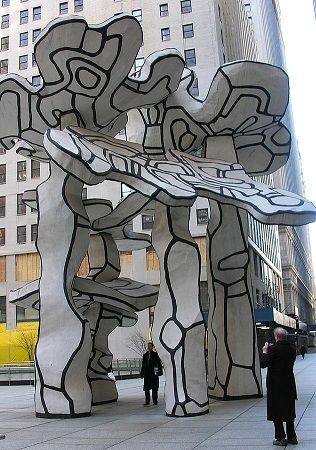
Until his death in 1985, Dubuffet was exhibited in retrospectives and exhibitions around the world. Rebelling against art, culture, and intellectualism, Dubuffet was instrumental in establishing the style of Art Brut, an aesthetic of his own that was devoid of the traditional standards of its time, both in style and subject matter. His primitive approach to art making, with its simple, childlike figures and bold, visually dramatic palette, has universal appeal and is instrumental in modern psychology and studies of mental development.
The artwork by Jean Dubuffet continues to be exhibited and collected by The Dubuffet Foundation, and is shown by the Pace Gallery in New York City.
Influences and Connections

-
![Edvard Munch]() Edvard Munch
Edvard Munch -
![Pablo Picasso]() Pablo Picasso
Pablo Picasso ![Jean Fautrier]() Jean Fautrier
Jean Fautrier
-
![André Breton]() André Breton
André Breton -
![André Masson]() André Masson
André Masson ![Hans Prinzhorn]() Hans Prinzhorn
Hans Prinzhorn![Max Jacob]() Max Jacob
Max Jacob![Jean Paulhan]() Jean Paulhan
Jean Paulhan
-
![André Masson]() André Masson
André Masson -
![André Breton]() André Breton
André Breton ![Antonin Artaud]() Antonin Artaud
Antonin Artaud![Jean Paulhan]() Jean Paulhan
Jean Paulhan
Useful Resources on Jean Dubuffet
- Jean Dubuffet: Works, Writings, InterviewsBy Valerie Da Costa, Fabrice Hergott, Jean Dubuffet
- The Work of Jean Dubuffet, with texts by the artistOur PickBy Peter Selz, Jean Dubuffet
- Jean Dubuffet: Towards an Alternative RealityBy Jean Dubuffet, Mildred Glimcher
- Dubuffet Prints from the Museum of Modern ArtBy the Museum of Modern Art, New York
- Asphyxiating Culture and Other WritingsOur PickBy Jean Dubuffet, Carol Volk
- Jean Dubuffet: Writings on SculptureBy Jean Dubuffet
